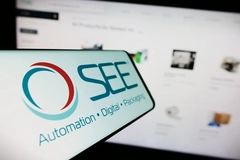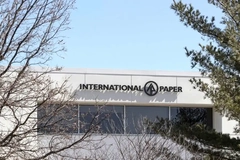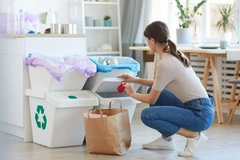Modified Atmosphere Packaging proliferates as food waste heightens climate concerns

06 Jul 2022 --- Modified Atmosphere Packaging (MAP) technology, which substitutes the atmospheric air inside a package with a protective gas mix, is booming in popularity. The design enables shelf life extension without including preservatives and can maintain the product image for greater consumer appeal. While the technology has been around for years, rising hygiene and food waste concerns are drawing many industry players toward MAP designs.
According to Innova Market Insights, the technology has grown over 30% in recent F&B packaging launches.
PackagingInsights speaks with Marcel Veenstra, marketing and communications manager at Sealpac, about how MAP technology is becoming an increasingly important and lucrative area of the packaging market and what developments we can expect to see in the near future, and the environmental sustainability challenges this growth presents.
Preserving life
As ingredient shortages threaten much of the world’s food supply amid COVID-19 disruptions and the Ukraine war, shelf life-extending packaging designs are becoming more essential than ever.
Veenstra notes that MAP is crucial to prolonging the shelf life of many fresh food products like meat and vegetables in particular and that preventing spoilage with the technology could become essential in many parts of the world that currently do not have access to it.
 Vegan sliced meat in a MAP traysealer.The UN estimates that around 17% of all food produced on the earth is wasted, leading to massive greenhouse gas emissions and water wastage. It is estimated that 33% or 1.3 billion metric tons of the world’s food are lost or wasted every year, accounting for roughly 7% of GHG emissions. According to the UN Food and Agriculture Organization, if food waste were a country, it would be approximately as big as Canada and India combined.
Vegan sliced meat in a MAP traysealer.The UN estimates that around 17% of all food produced on the earth is wasted, leading to massive greenhouse gas emissions and water wastage. It is estimated that 33% or 1.3 billion metric tons of the world’s food are lost or wasted every year, accounting for roughly 7% of GHG emissions. According to the UN Food and Agriculture Organization, if food waste were a country, it would be approximately as big as Canada and India combined.
This volume equates to 1.4 billion hectares – 28% of the world’s agricultural area. It would be able to feed the 800 million hungry people on the planet with just a quarter of its surface.
“As such, MAP prevents precious food waste and contributes to a significantly better environment,” notes Veenstra. This continuing food loss crisis is therefore helping raise the packaging design as a go-to solution for manufacturers.
Veenstra also says that in areas where MAP is already readily available for food producers, it can add a cosmetic effect that improves the sellability of items.
“For some products, such as fresh red meat, it also maintains the color at retail, making it more appetizing for consumers to buy,” he explains.
Improving and developing MAP
As environmental sustainability concerns and their connection with human hunger dominate product development, many manufacturers of MAP – such as Sealpac – are creating new ways of improving packaging’s environmental impact. Veenstra says that the next step will be to create hybrid packaging (for example, paper-based trays with a plastic inner layer) suitable for MAP.
“In general, the challenge will be to maintain the MAP capabilities of packaging in light of the demand for environmental sustainability,” he notes.
 Sealpac’s FlatMap can achieve 75% plastic savings against average retail options.Plastic reduction is a key demand for both manufacturers and consumers as legislation like the UK Plastic Packaging Tax and the UN Global Treaty on Plastic Pollution is adding pressure to switch to fiber-based materials. A recent Innova Market Insights survey also found that 44.4% of global consumers say they are concerned about the environmental risks of plastic packaging but understand its benefits for preventing health risks.
Sealpac’s FlatMap can achieve 75% plastic savings against average retail options.Plastic reduction is a key demand for both manufacturers and consumers as legislation like the UK Plastic Packaging Tax and the UN Global Treaty on Plastic Pollution is adding pressure to switch to fiber-based materials. A recent Innova Market Insights survey also found that 44.4% of global consumers say they are concerned about the environmental risks of plastic packaging but understand its benefits for preventing health risks.
Such risks include food shortages as well as pharmaceutical protection.
“There is a strong demand for reducing plastics in food packaging, for example, by applying cardboard, or making food packaging more recyclable, for example, by applying monomaterials,” says Veenstra.
“MAP requires plastics with sufficient barrier properties to maintain the modified atmosphere (gas mixture) inside the pack. Here we need to find a balance. That is why our motto can only be: ‘as little plastic as possible, as much as necessary.’”
Amax efficiency
Another issue companies like Sealpac face in moving MAP technology forward is the time and energy required to create packaging products.
“MAP requires a longer sealing process than sealing only, as first, the air inside the package needs to be removed and then the gas mixture is added,” explains Veenstra.
 MAP has grown over 30% in recent F&B launches, according to Innova Market Insights.“With food manufacturers looking for highest packaging efficiency, Sealpac has always focused on optimizing its tray sealers and thermoformers for running MAP at highest outputs.”
MAP has grown over 30% in recent F&B launches, according to Innova Market Insights.“With food manufacturers looking for highest packaging efficiency, Sealpac has always focused on optimizing its tray sealers and thermoformers for running MAP at highest outputs.”
To improve efficiency, Sealpac recently launched its Amax-series tray sealers, which Veenstra says “have brought efficiency to another level.”
“Due to a whole new drive system, the speed of the entire process is based on a simple principle: the number of packages to be sealed per minute, as specified by the operator. This determines the speed of all subsequent processes.”
“The result is an increasingly optimal packaging process, which, if necessary, extends to the maximum physical limits set by the product and the packaging materials – this includes when running MAP.
Tray sealing
Last year, PackagingInsights spoke with Sealpac’s marketing and communications coordinator Irene Buzzoni, who explained that food trays, which use cardboard plates with MAP sealing technology, are a booming choice for F&B producers globally.
This is because the tray sealing answers both the call for increased recyclability and fiber-based solutions while maintaining the product protection of a modified atmosphere.
“From our perspective, the main trends are downgauging the thickness of plastic trays, the introduction of trays made out of mono-plastics, and the rapid growth of hybrid trays with a paper base and thin plastic liner or inlay,” pinpoints Buzzoni.
“The overall aim is to improve sustainability and recyclability. We have optimized our traysealers to handle these so-called ultra-light trays and offer eTray as a paper-based MAP tray. Furthermore, we enable our customers to run mono-trays on their Sealpac traysealers.”
By Louis Gore-Langton











